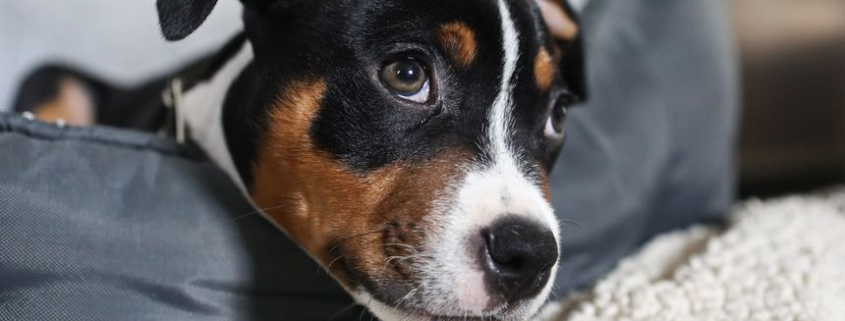The “Pandemic Puppy” – Dog Life After the Pandemic
The pandemic presented us with many new challenges. However, many of us added new companions to our families during the tough times. Research shows that about 10% of US adults adopted a new pet during the pandemic. Puppies adopted during the pandemic are sometimes called “pandemic pups.” Some of these new puppies may have never experienced separation from their owners. People working from home spend a lot of time with their pets. Unfortunately, as many people are heading back to the office world, animals may be in for a shock.
Sudden changes like this can affect our pets. Think about it. What are the odds that a dog who has spent every hour of the day with its owner for over a year will have a problem when its owner leaves home for several hours a day? Separation anxiety is a common behavior problem. Behavioral and physiological signs may include:
- Pacing
- Panting
- Anxiety
- Hyperventilation
- Salivation
- Vomiting
- Diarrhea
- Depression
- Panic
- Loss of appetite
You may be wondering how you can ensure that your dog has separation anxiety in the first place. If you were away from home, how would you honestly know? We recommend that you gather evidence based on video footage. Without video, you only establish your concern on the signs of destruction, house soiling, or reports from neighbors. There are multiple ways that you can collect video. You can use your cell phone or purchase a doggie webcam. Once you view the video recording, you will better understand your dog’s behaviors once you leave the house. If they show any of the signs we mentioned above, then they may be experiencing separation anxiety.
It can be challenging to treat separation anxiety. Most studied interventions have been shown to decrease the signs associated with separation anxiety in most cases. Many pet owners may need the assistance of a qualified positive-reinforcement trainer to help them with behavior modification. Prevention of the problem should focus on teaching the “pandemic puppy” or any dog that it is safe to be alone.
We love the time we spend with our four-legged friends, but separation anxiety leads to enormous suffering for dogs. Fortunately, there are several methods to address the issues of separation anxiety. Consider crate training, desensitization, exercise, medications, and natural supplements. With patience, consistency, and a positive attitude, you will be able to reduce your pup’s suffering and put the stress of separation anxiety behind everyone.



